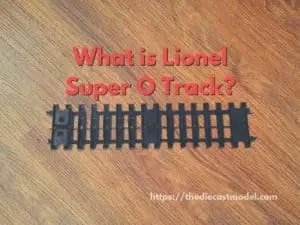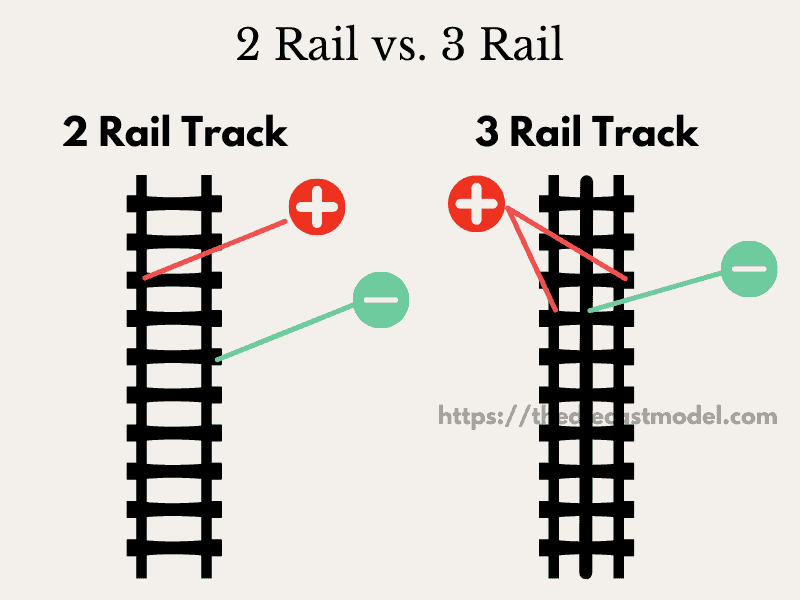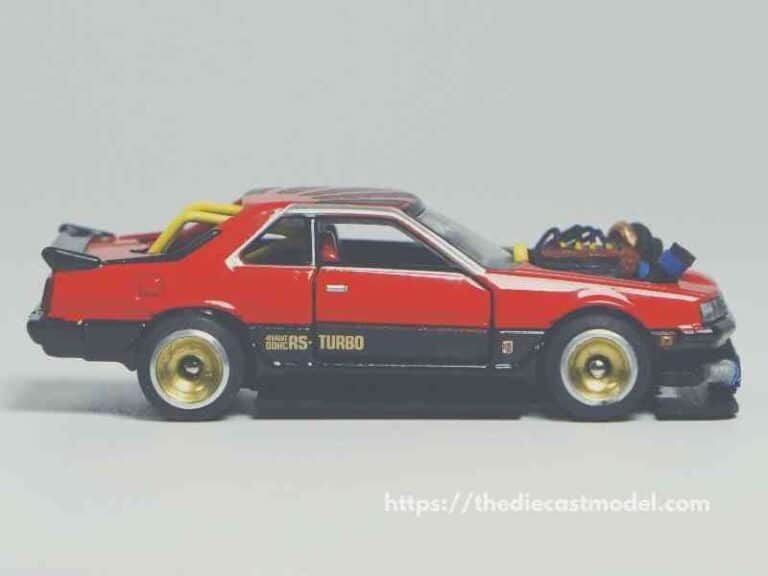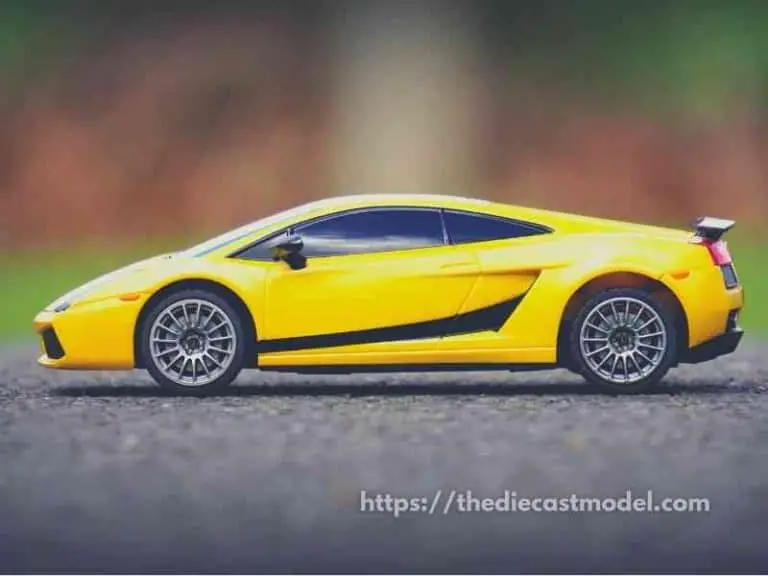What is Lionel Super O | Super O’s History and Characteristics
Lionel’s Super O is the company’s response to one of the most common complaints of train modelers on their popular 3-rail tracks, which is realism. This track was made in 1951, patented in 1954, and introduced to the market in 1957. However, it was discontinued in 1966. But why did the product which is supposed to solve the problem of their 3-rail tracks fail? Why do these tracks still have a following? We will talk about these in this post.
The Lionel Super O track is a product of Lionel trains released to the public in 1957. Super O added realism to their 3-rail tubular train tracks, which is the chief complaint of most train modelers. The track falls on the O36 category of O gauge tracks.
This post will not only discuss the history behind the Lionel Super O track, but we will also discuss its characteristics, such as its circle track radius, compatibility, gauge, size, and more.

What is Lionel Super O Track?
The Lionel Super O track is Lionel’s answer to the people complaining about the realism of their 3-rail tracks. While the 3-rail tracks added simplicity to the wiring of tracks, actual trains run on 2. So to make their layout realistic, they introduced the Super O track in 1957.
Super O has a fascinating history, and it started with Lionel’s introduction of the 3-rail tracks.
Old model railroading is more complicated than before due to their limited technology.
The older layouts used more complicated wiring, and they are prone to short circuits.
In addition, more complex tracks such as adding reverse loops made short circuits common.
In 1906, Lionel introduced the 3-rail tubular tracks, which became a hit since it made model railroading easier and simpler.
This simple track design significantly reduced the number of short circuits and made model railroading easier.
The 3-rail tracks made Lionel popular, and most modelers still link 3-rail tracks to Lionel.
This design became a huge success, and it has been popular for half a decade since Lionel reached their peak sales in the 1950s.
However, the 3-rail track’s major flaw is that it isn’t realistic.
Recommended Read: For a complete history of the Lionel Tubular track, feel free to check this post: What is the Lionel Tubular Track, and does Lionel Still make them?
Most trains run on two rails except electric trains. While electric trains have a third rail, their third rail isn’t located in the center of the rail.
Most electric trains’ third rail runs either on the side of the rail away from the people or on top of the train to supply electricity.
This major flaw is a primary concern for most modelers. That’s why Lionel started designing a rail that looks realistic while still having a third rail.
That’s when they designed the Super O track, which was designed in 1951. However, it is still not released in public for many reasons.
One reason is that Lionel is still waiting for its patent to protect the design. This is to make them the exclusive producer of the Super O design.
Another reason is that they are still at their peak in the 1950s. Their sales are skyrocketing, and they don’t see any reasons to release something new since they are focusing on their efforts of releasing their O scale trains.
That is why they released the Super O tracks in 1957. This was also the time when Lionel’s sales started to dwindle.
Their product sales started to dwindle for two reasons. One is that the HO scale is becoming more popular than the O scale. This isn’t good since most of Lionel’s products are on the O scale.
Today, about 95% of their model trains are still sold on the O scale.
Another reason for their decline is that spaceships and car models have become more popular. This reduced the number of people collecting model trains.
Since the Super O also uses the O gauge, it was released at the wrong time. So if they release the Super O earlier, it will be a big hit.
That is why Super O’s production stopped in 1966.
There are rumors that Super O will be out in public again, but after some time, it seems to be a rumor since there isn’t any release of the Super O yet.
In the future, maybe we will see them again. However, you can only get Super O tracks from other modelers as of now.
That is the history of the Super O. The next section will talk about the characteristics of the Super O. We will discuss their size, material, and more.
What are the Characteristics of the Super O Track?
| Name | Lionel Super O track |
| Circle Track Radius | 18″ |
| Circle Track Diameter | 36″ |
| Minimum Tracks for Circle Track | 8 |
| Turn Angle | 45° |
| Track Length (Curved) | 12.5 |
| Track Length (Straight) | 11.5″ |
| Track Width | 1.25″ |
The Lionel Super O track is a type of O36 gauge track. This means its circle diameter is 36″ and has an 18″ radius. This track has a length of 12.5″ if curved and 11.5″ if straight. Its third rail is made of copper, making it a good conductor of electricity despite being thin.
The table above summarizes the characteristics of the Super O track.
Basically, it became more realistic since it added ties, and they made the third rail as thin as possible. By doing this, the track became more realistic.
You can check the photo I’ve attached at the top of this post to see what the Super O track looks like.
To make it simpler, the Super O track is a variant of the O gauge. Hence it is still called Super “O.”
To be specific, the Super O track is an O36 gauge track. This means if you attach the curved Super O tracks, it will form a circle with a diameter of 36″.
To compare, the standard O gauge is O31. This means the normal O gauge track would form a 31″ diameter.
The Super O track is also different from the other popular variant of the O gauge named the O27.
Recommended read: For more information regarding the O27, please check this post: O27 vs. Standard O.
To make a circle of Super O, you need at least 8 45° curved tracks. So the diameter of the circle would be 36″.
One of the challenges with Super O is that since the third rail is significantly thinner, they need to use a different material so it wouldn’t cause any voltage drop.
That’s when they started to use copper for the third rail. Copper has been used in wires and is known as a superconductor by many.
The Super O has a disadvantage, though. The Super O’s thin third rail harms the pickup roller, and over time, it can cause scratches and grooves to the roller.
However, this takes time to happen, but it is worth noting when using the Super O.
The last section will discuss Super O’s compatibility with other tracks.
Is Super O Track Compatible with Other Tracks?
Generally speaking, the Super O track is compatible with other 3-rail tracks from Lionel, like their tubular tracks. However, it might not be compatible with other brands such as MTH and Atlas.
Thanks to the standard sizes by the NMRA or the National Model Railroad Association, there are a lot fewer compatibility issues than the early model railroading days.
This is because the NMRA specified the sizes you should put in the O gauge, including the Super O track.
However, the unique 3-rail system of the Super O track is the problem. Since 3-rail tracks have a different location for their positive and negative charges, plus they use rolling stocks to distribute electricity to the motor, they are generally not compatible with 3 rail tracks.
Here is an illustration of the different locations of the charges comparing a 3-rail track to a 2-rail track.

However, the good news is that they are compatible with the majority of the 3-rail tracks like Lionel’s tubular train and Menards.
You need to add adapter pins to combine Super O tracks with the other 3 rail tracks. Two rail tracks aren’t compatible.







